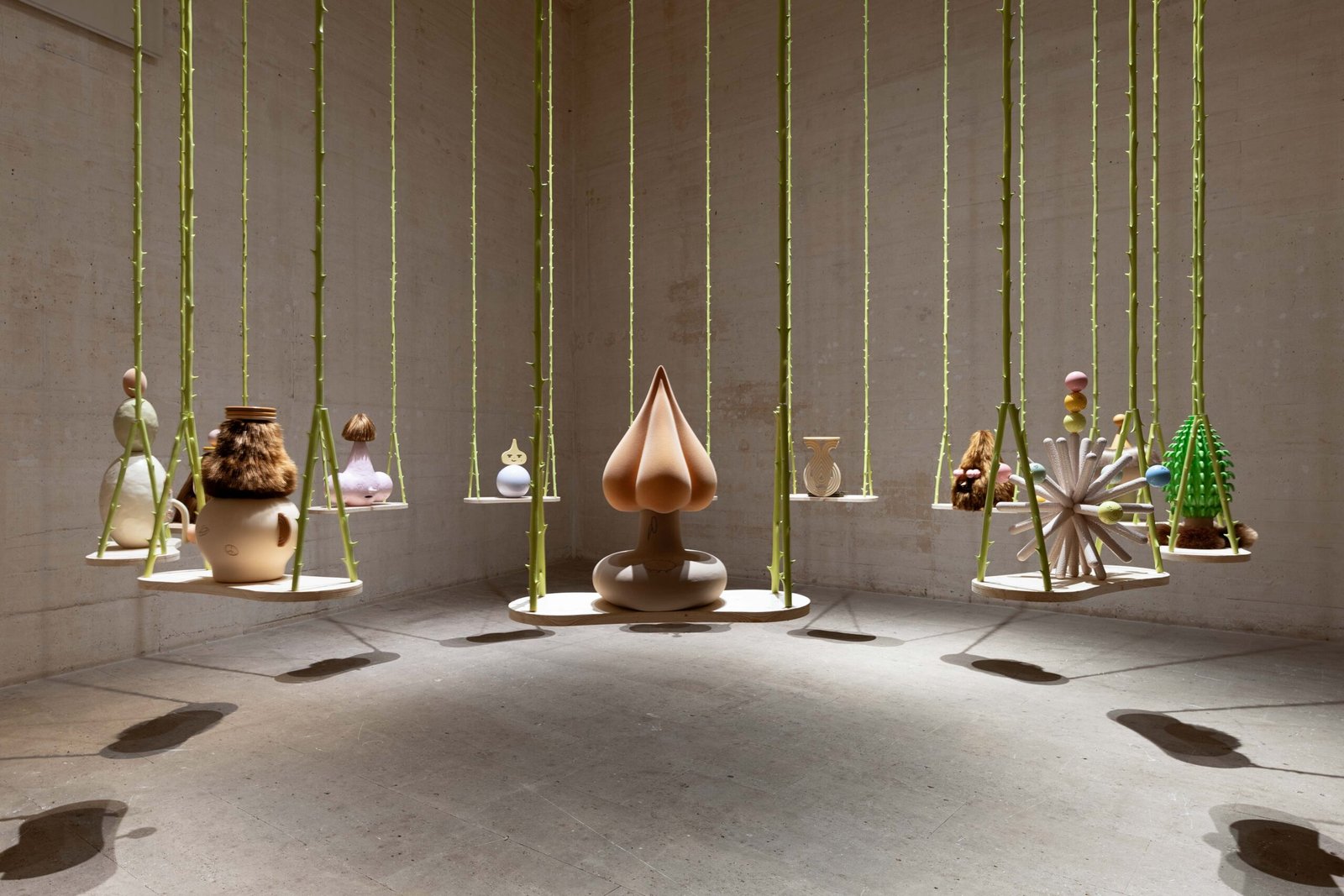
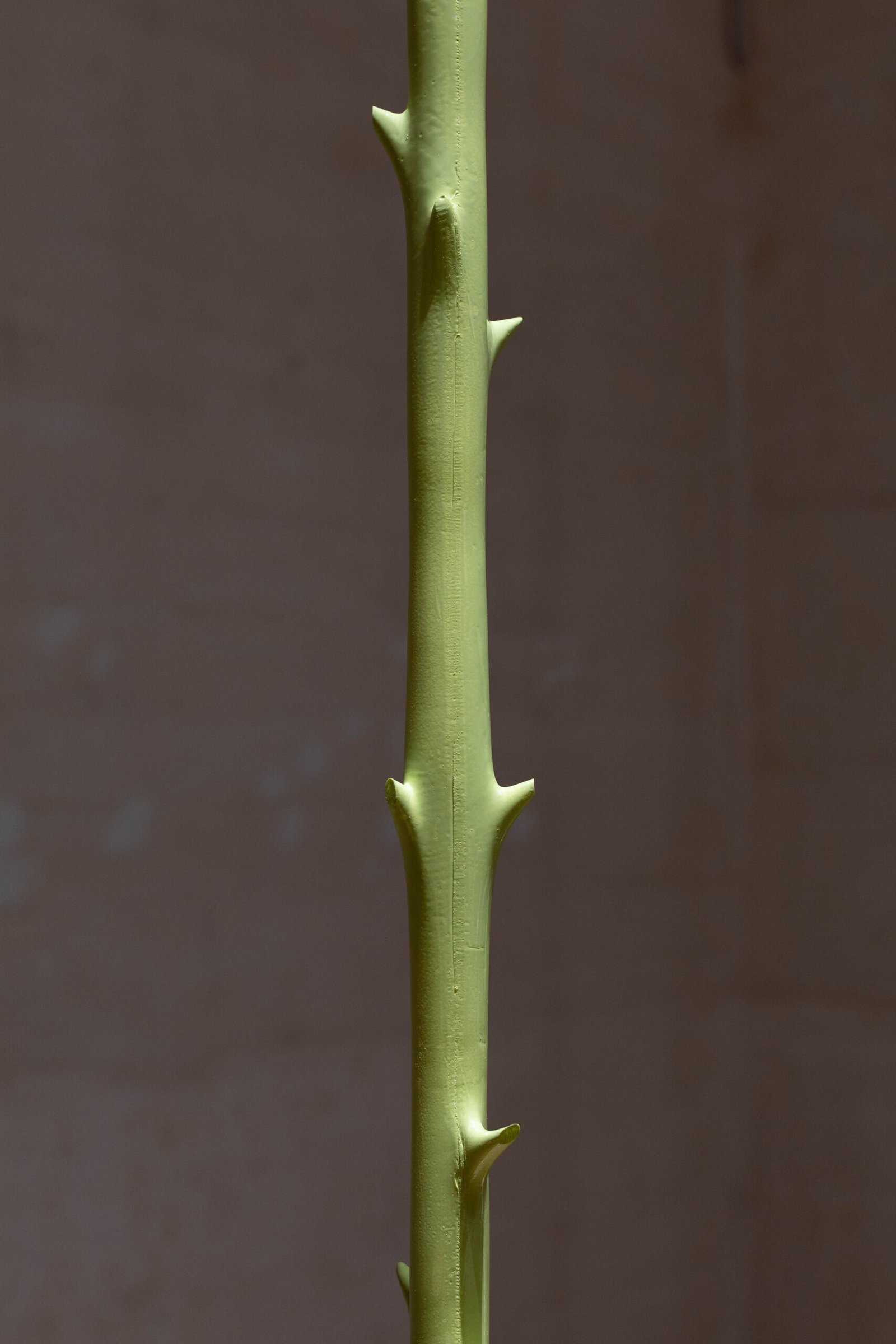
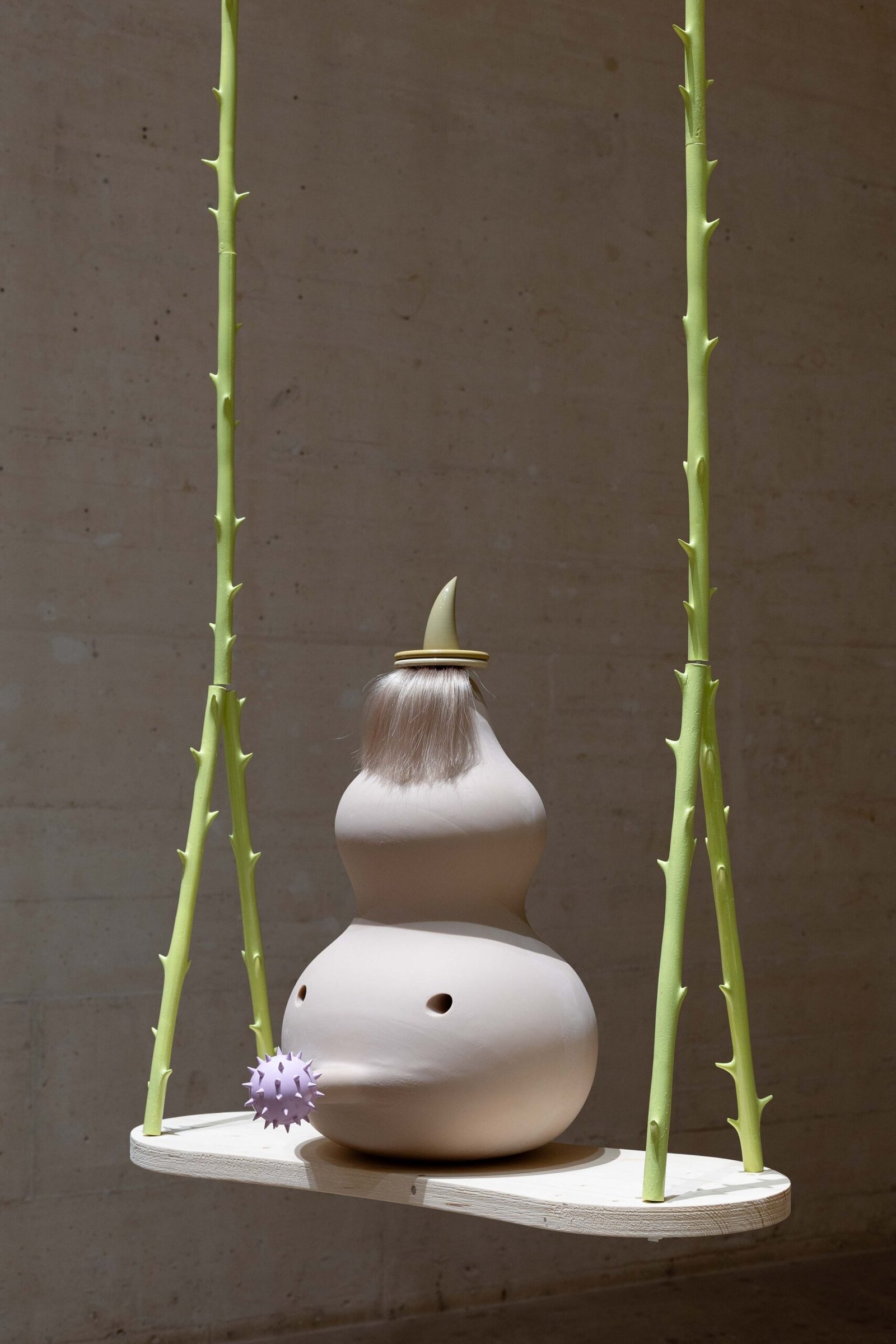
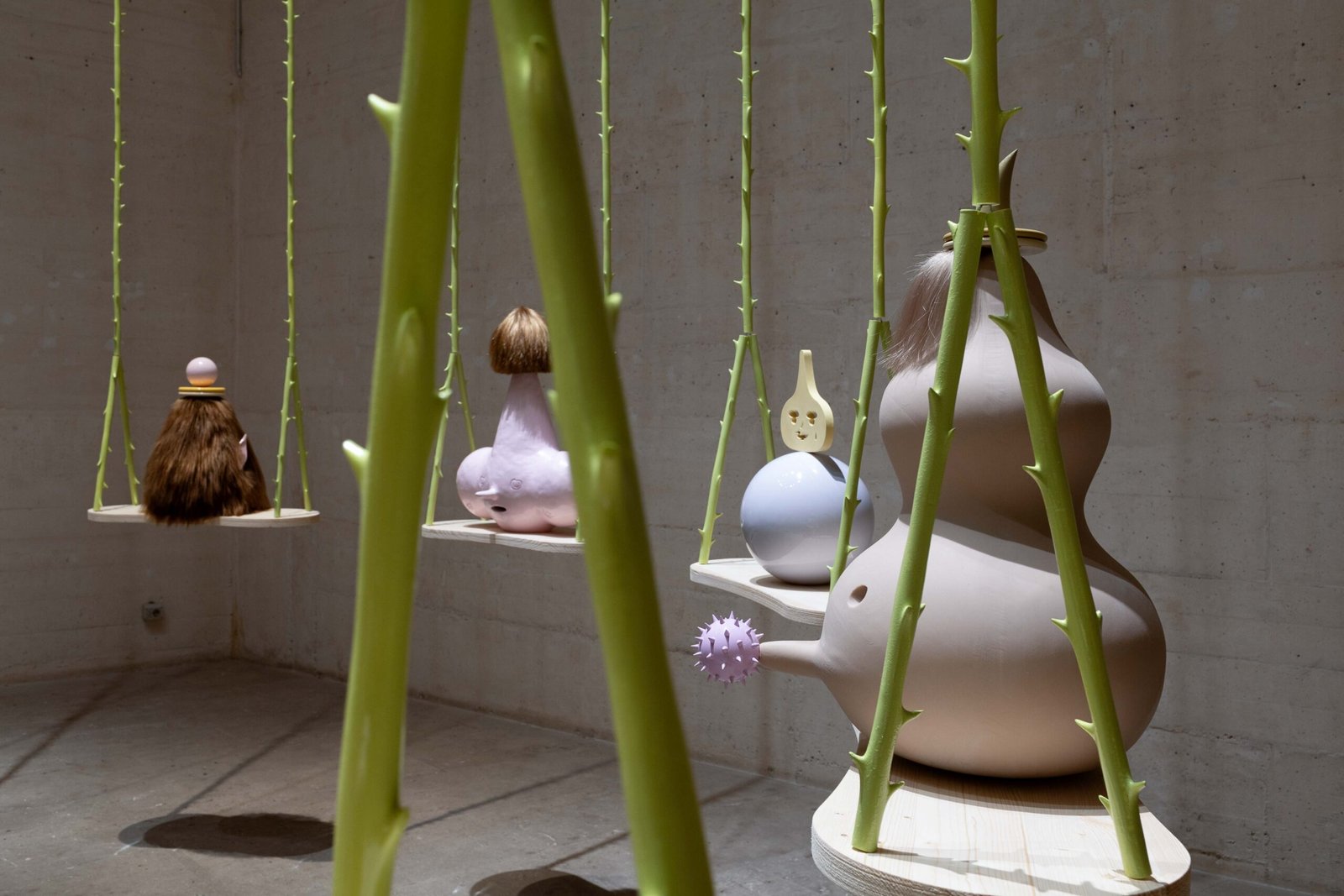
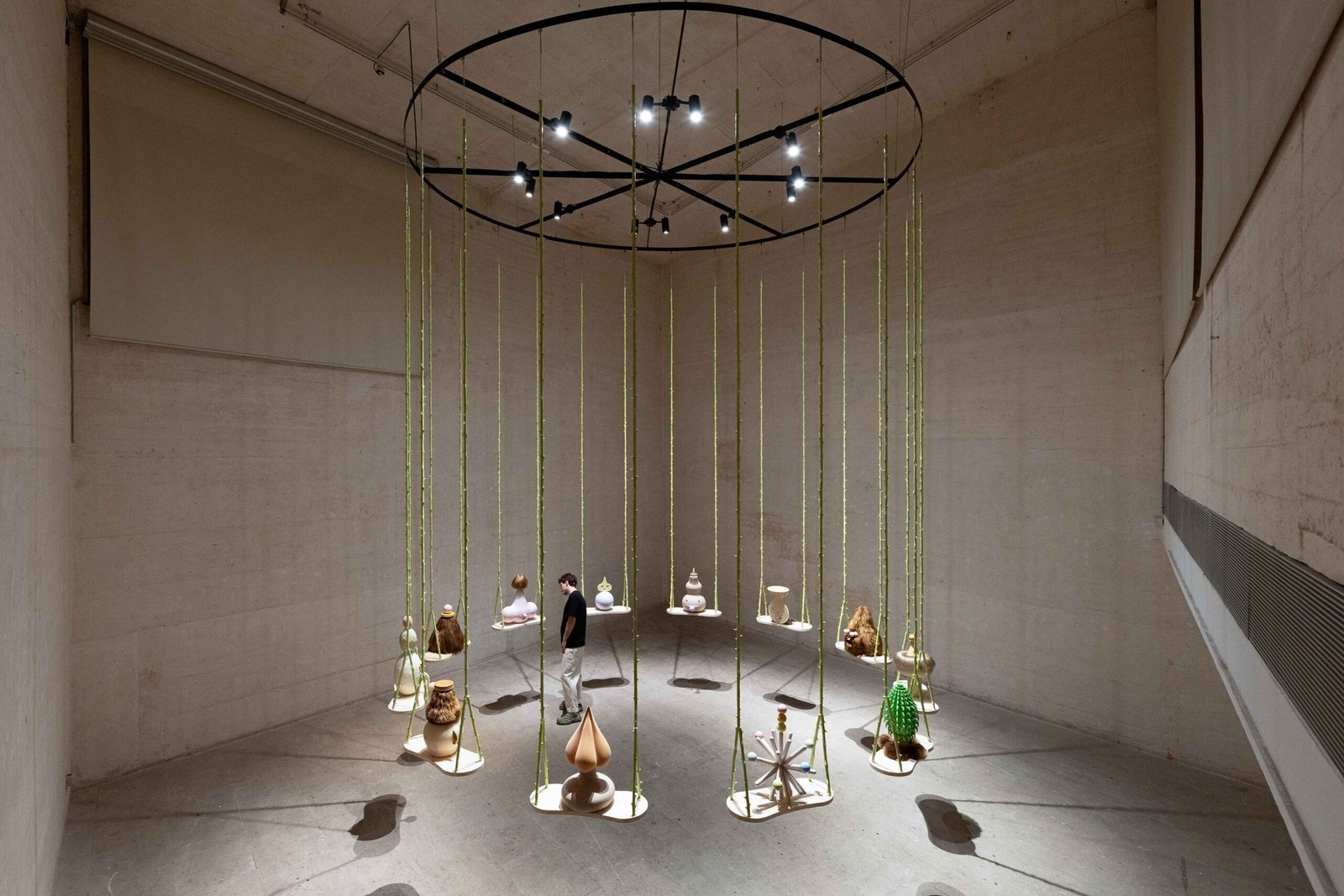
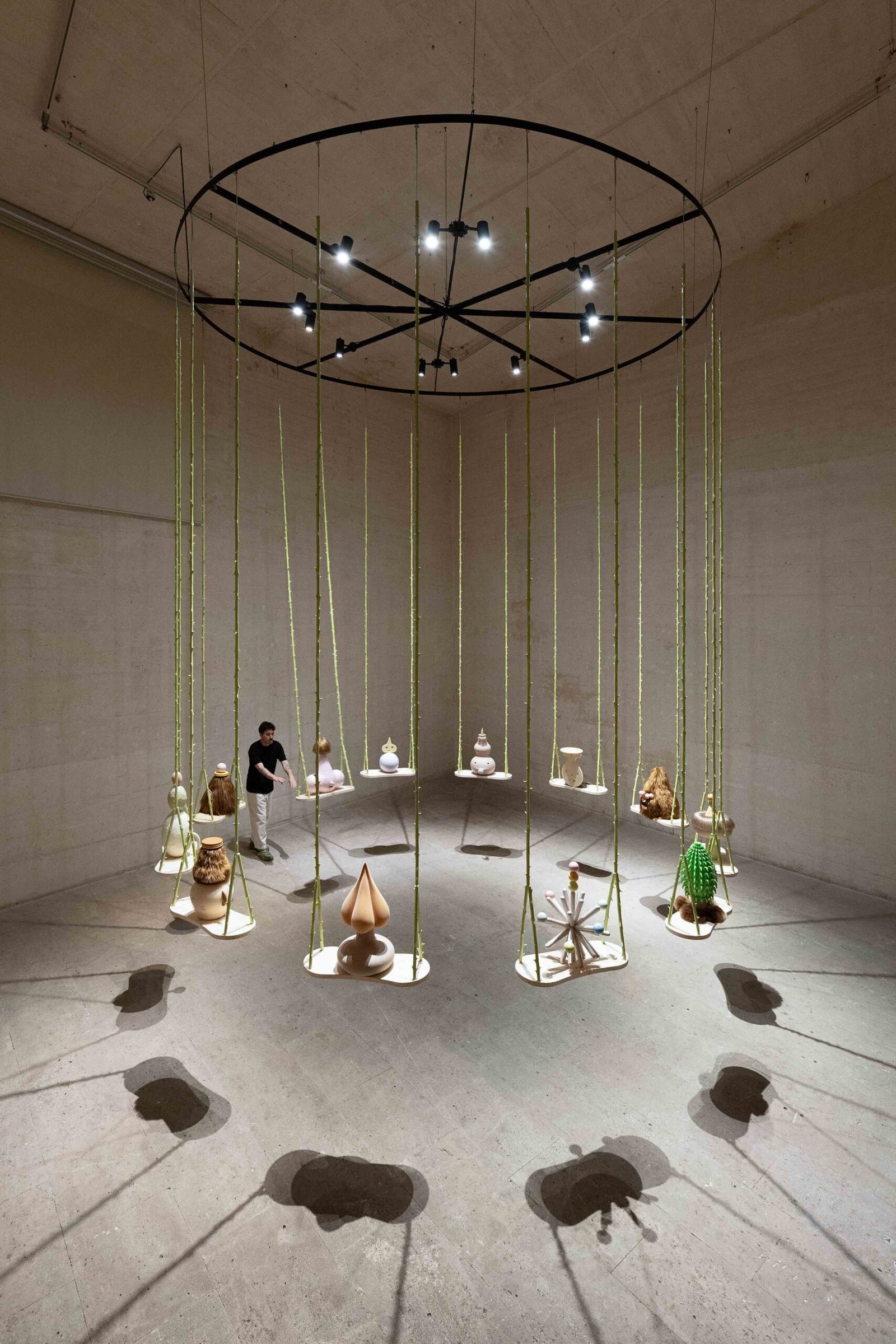
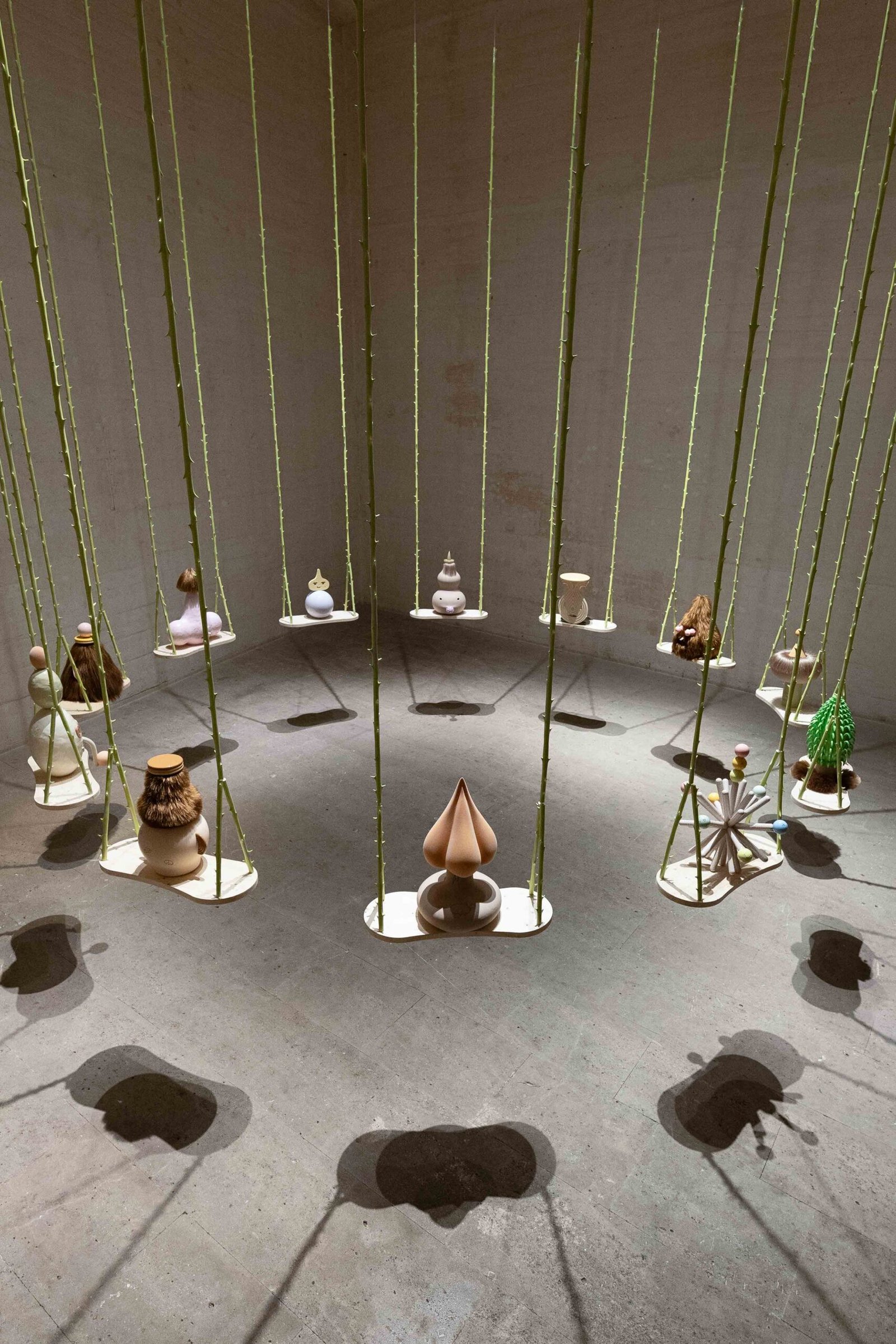
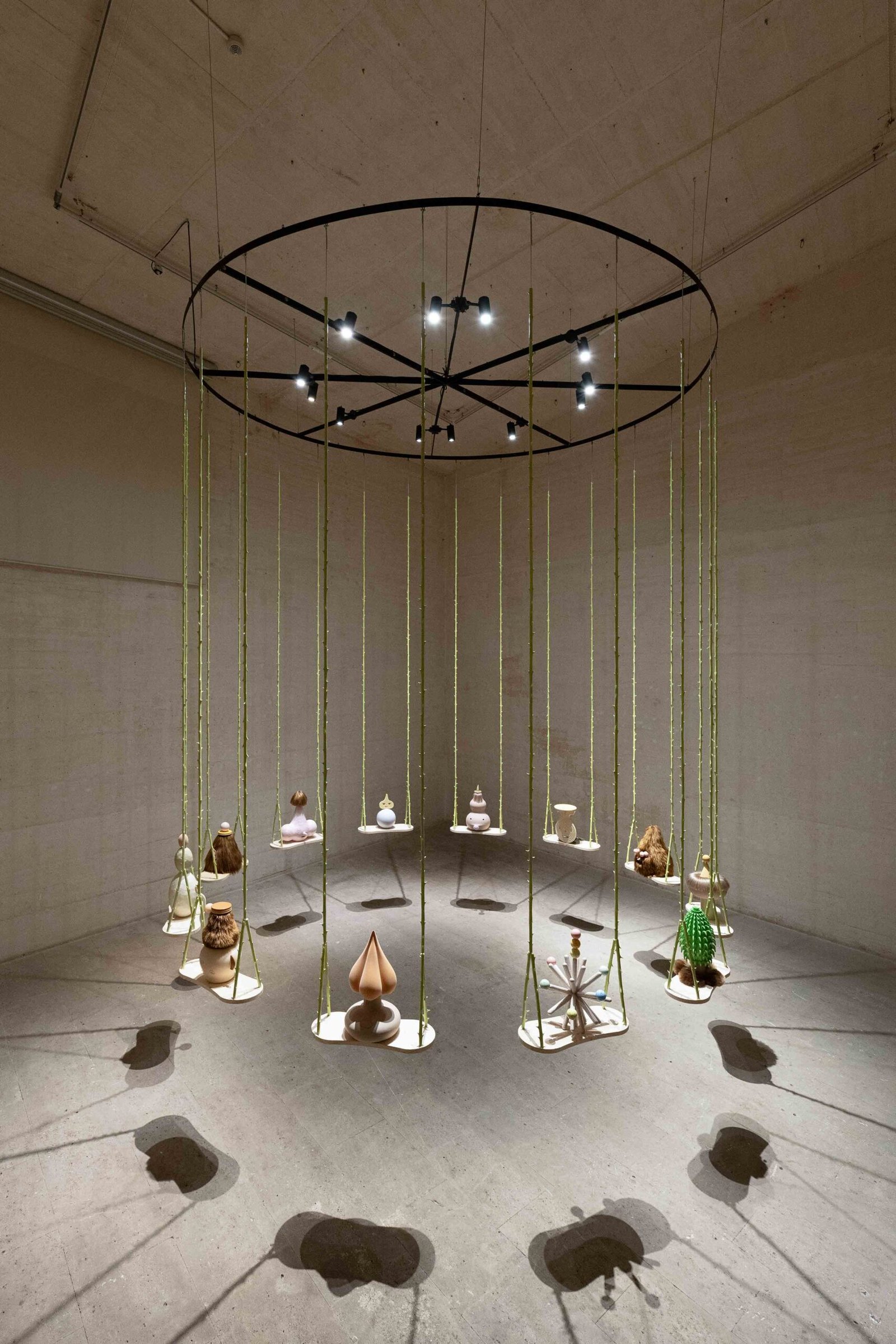
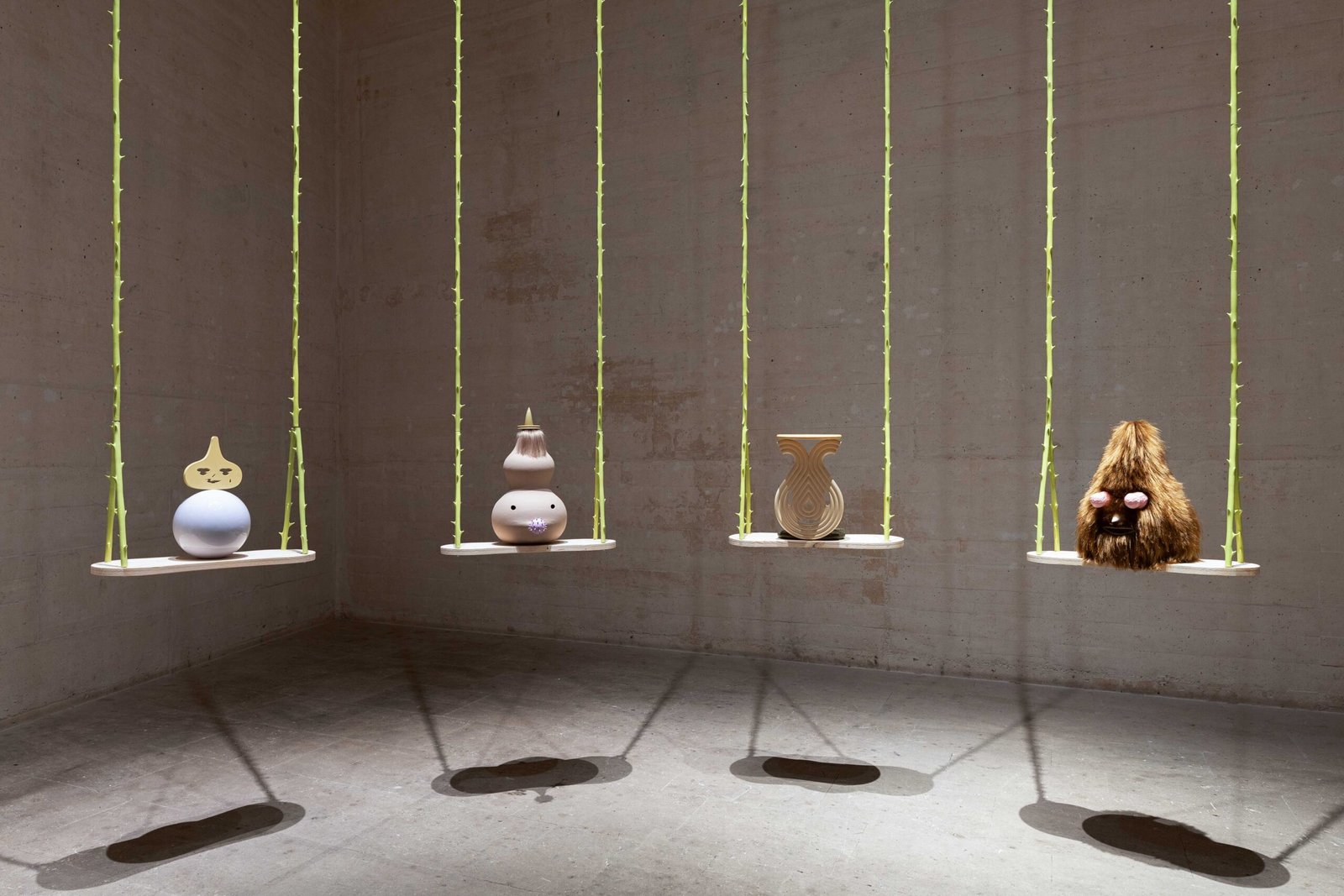
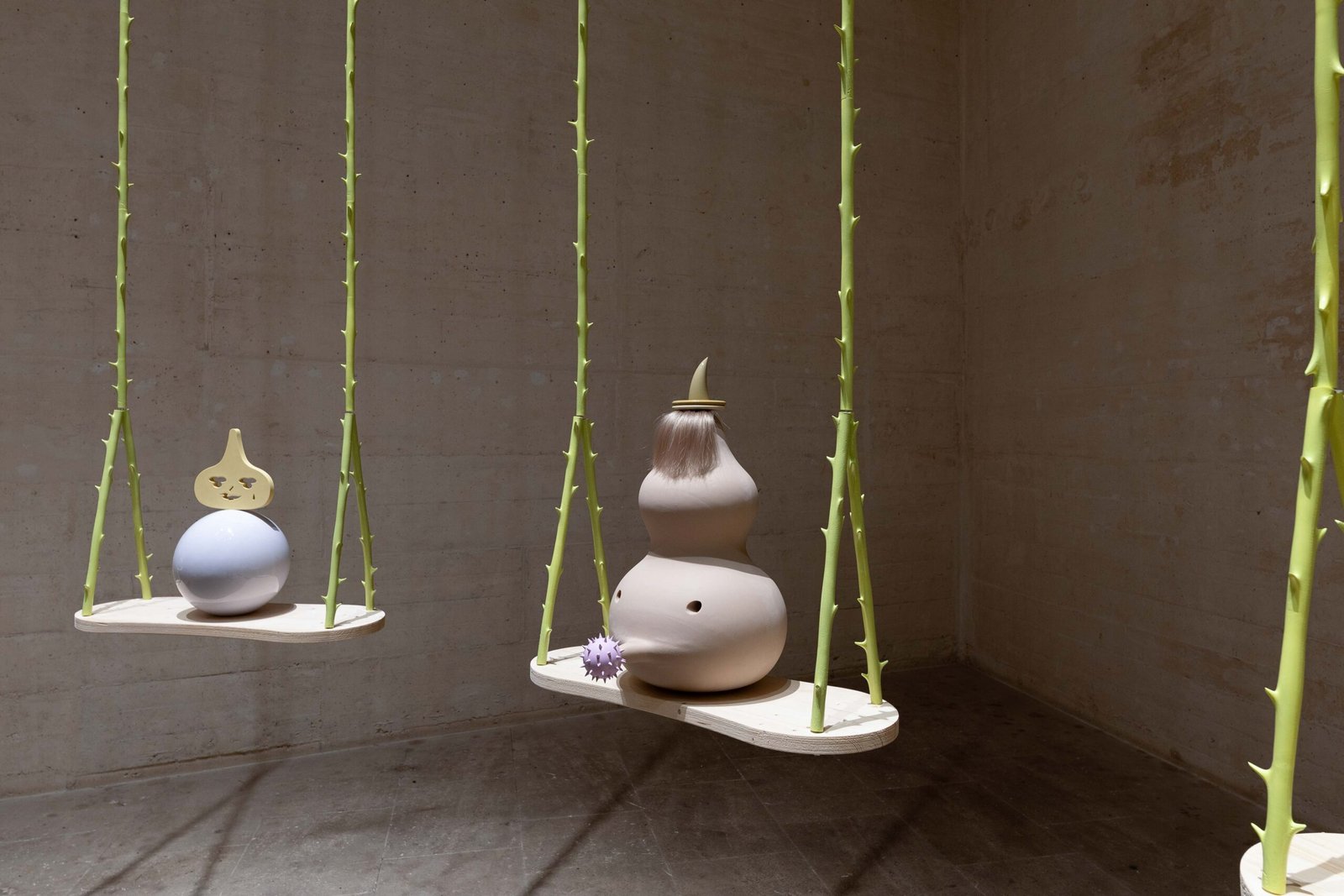
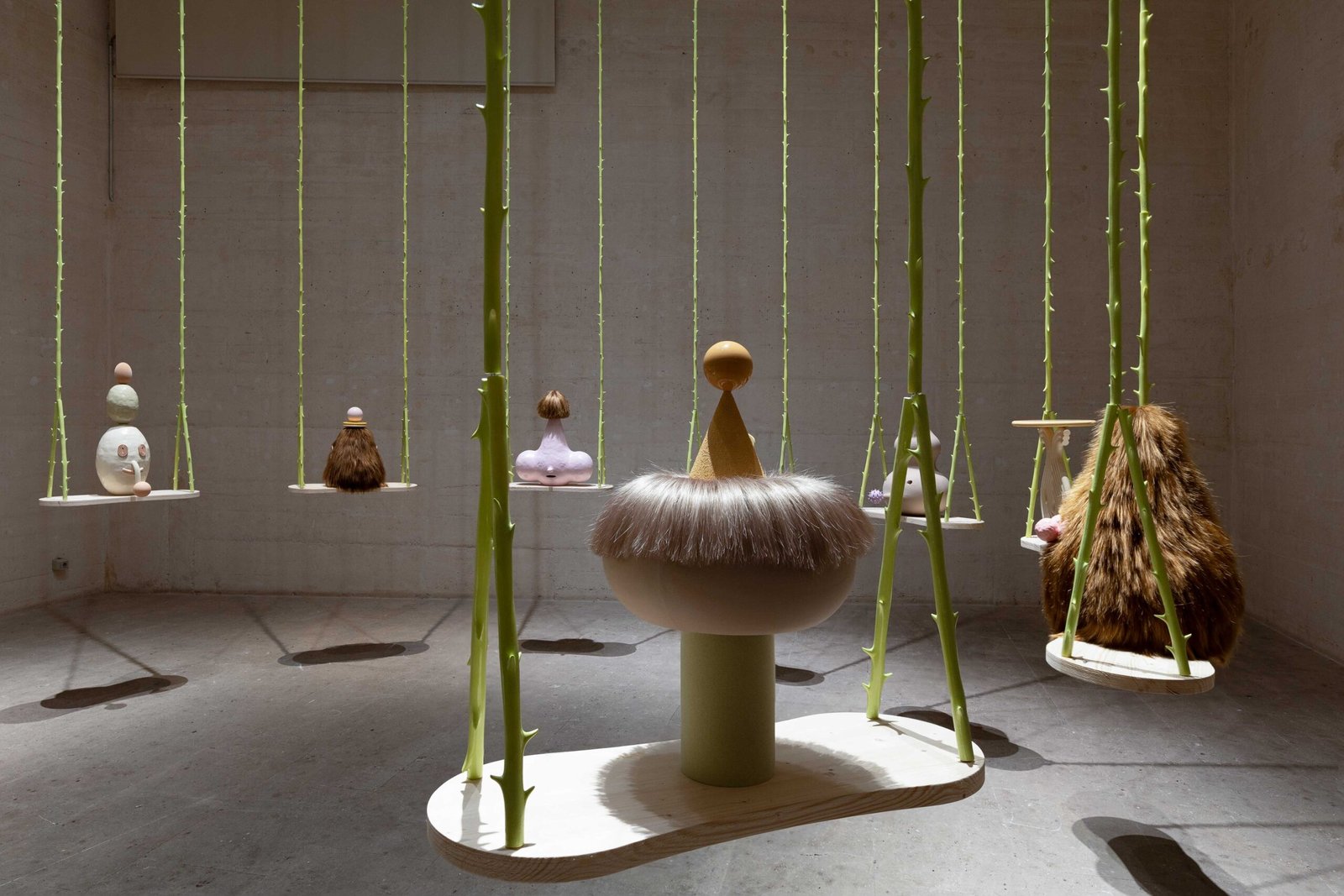
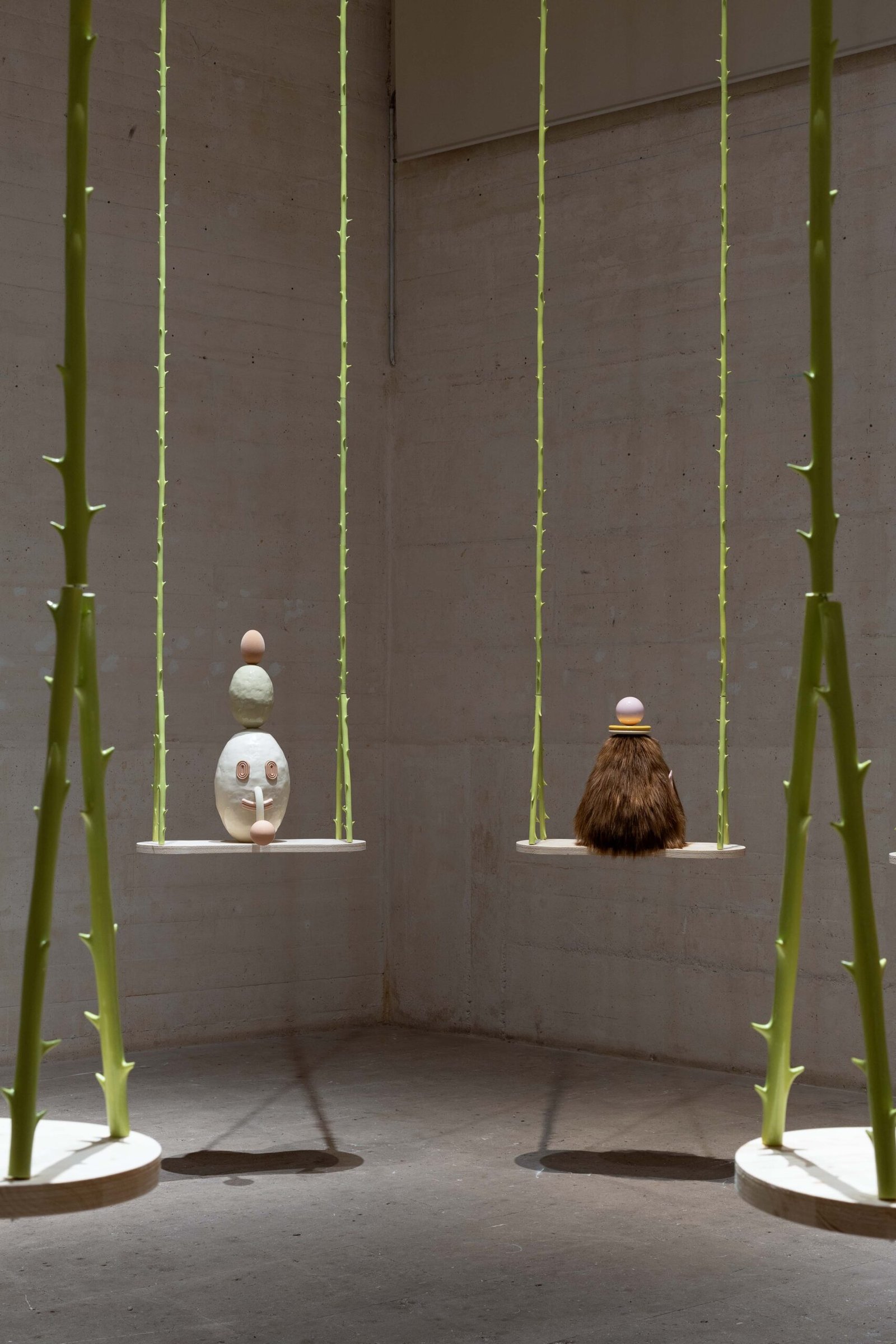
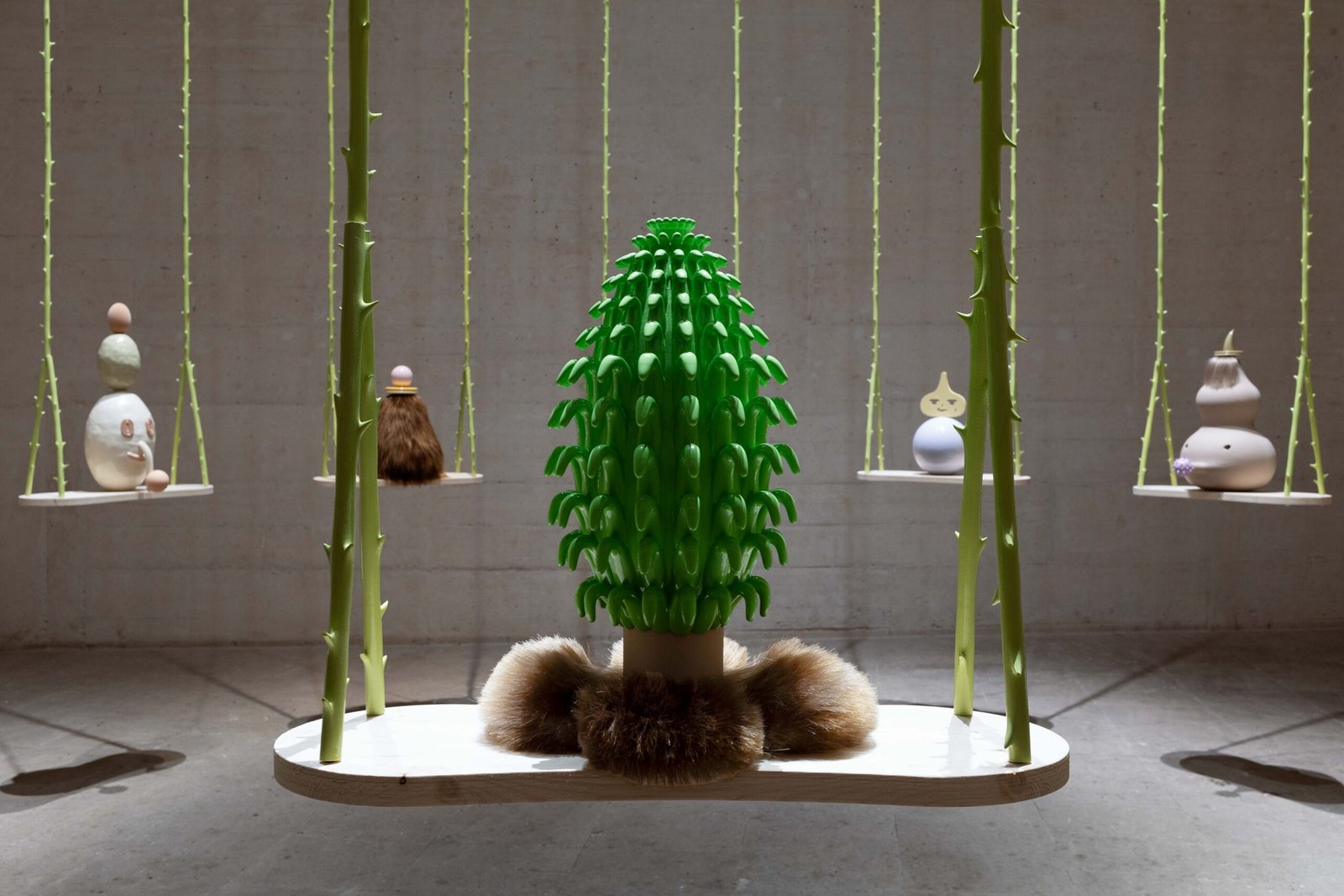
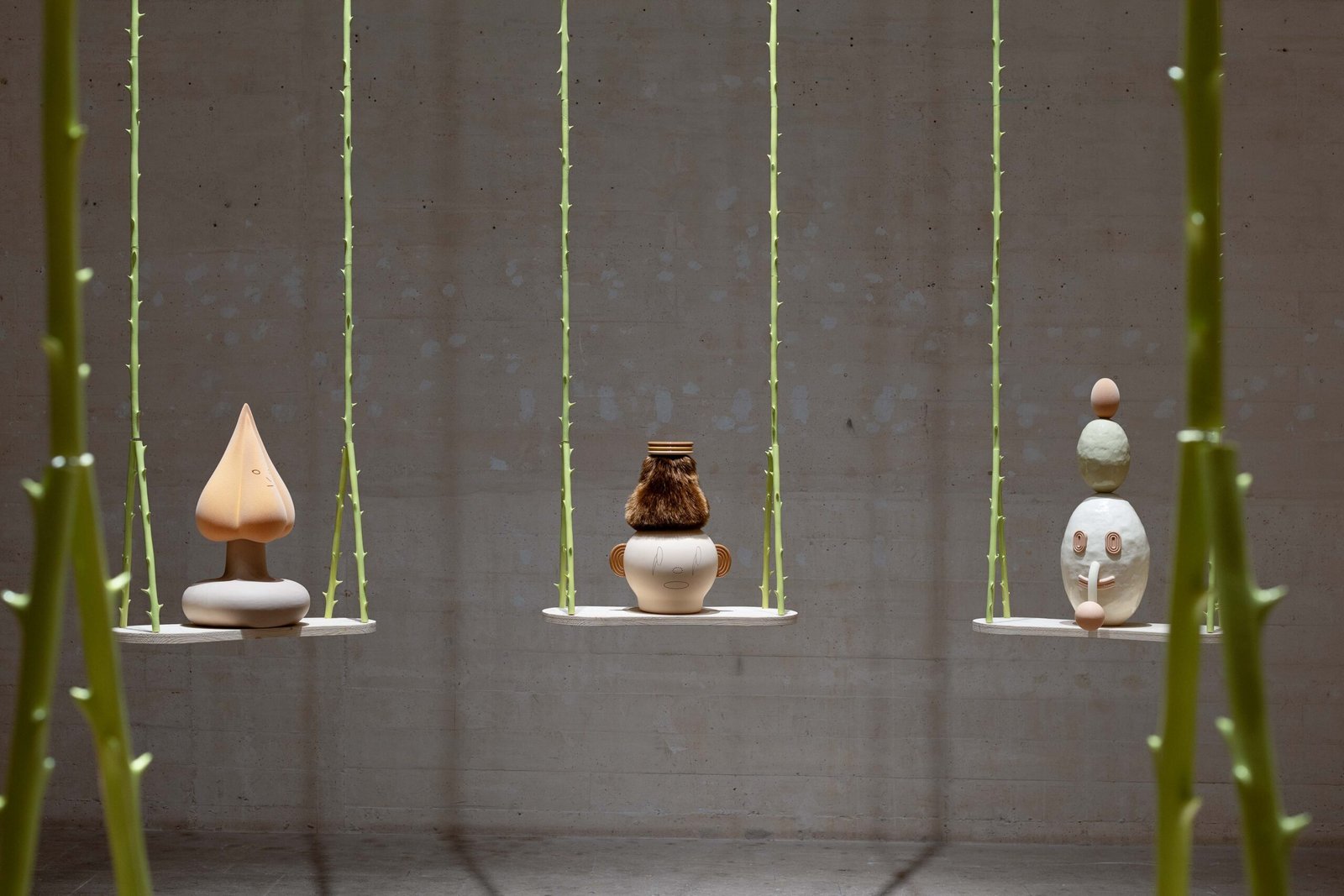
Twelve swings are at rest, arranged in an orderly fashion to form a circle. These long
suspended structures generate a sense of strangeness due to their thorn ropes, whilst each
individual structure serves as a seat for a different figure, alluding to a specific imaginary. The
figures are made up of a wide range of colourful shapes, differentiated by their large noses or
diverse hairstyles topped off with extremely shiny hair.
We tend to associate swings with playgrounds or swinging for fun. Here, however, a different act
is occurring in which the lack of motion prevails, creating another meaning by functioning as a
cinematic archetype: a still swing is a sign that something is wrong, and the spiky thorns merely
confirm this message.
Grip Face (Palma, 1989) has constructed a playground that places us in the midst of a moment
of crisis. As in other projects, the artist manages to escape millennial nostalgia, instead
providing a commentary on a current occurrence. This sinister warning, in contrast to the
sugar-sweet, twinkling tone of the forms, actually reveals new and sinister imposed logics
(military and colonial) that break with everything that had once promised well-being: public
spaces imply danger, fun is not an option, and childhood is endangered.
The key element in this installation is the mask. Grip Face has created a visual dictionary
inspired by signs, palettes, and references from the street, drawing on a cross between internet
folklore and underground references. The artist constantly plays with the interchange of
references, always showing at the same time as hiding, a movement that begins with the artist’s
own alter ego and continues with a repertoire of portraits, as he calls them. The result is a series
of avatars with a double meaning, in which he contrasts reality with poetry. Here, a prosthetic
setting composed of resin, velvet, and inserted hair places us in front of a circle of stars, which
is actually a reference to Europe’s complicity regarding this state of affairs.
In the end, the space becomes a dystopian allegory, a muddy utopia that warns of any future
hopes or expectations being hijacked. By reformulating symbols, this sculptural series reverses
the numbness of scrolling and digital architecture to reveal the harshness of an occurrence.


